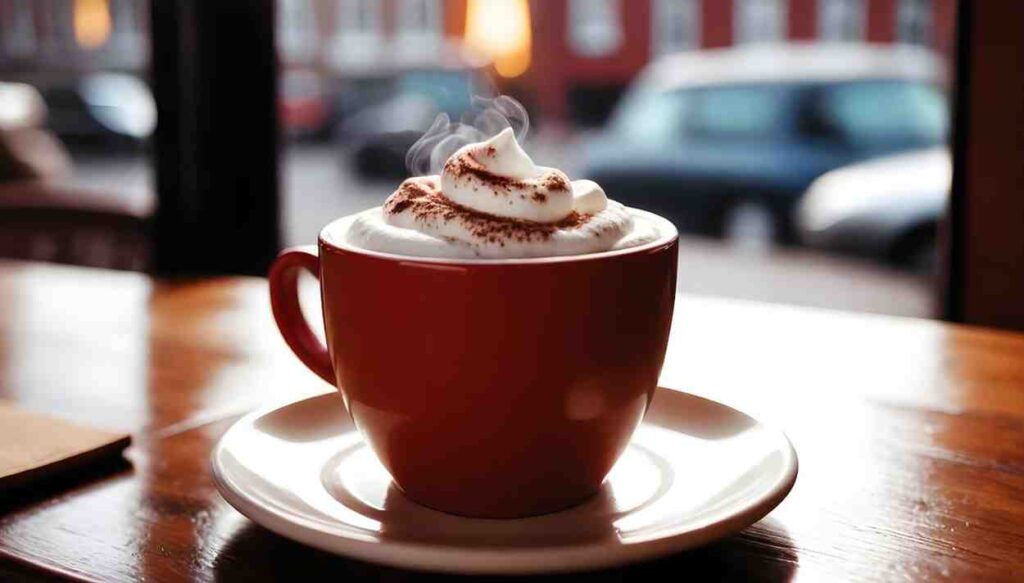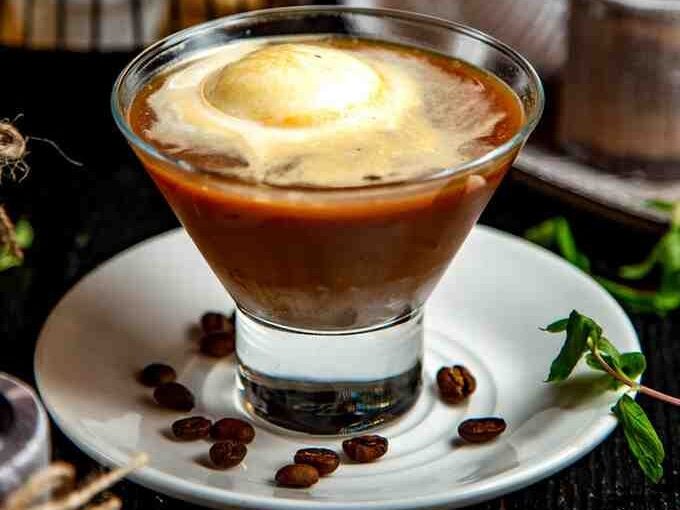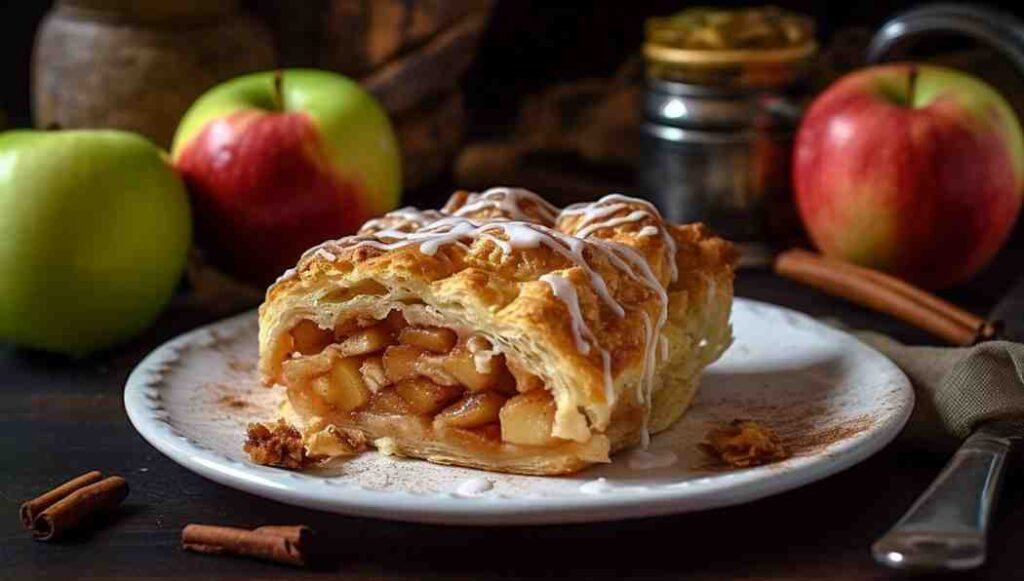Viennese coffee is a luxurious beverage that embodies the elegance of Vienna’s coffeehouse culture. Known for its rich blend of strong coffee, whipped cream, and sometimes chocolate or liqueur, this iconic drink has a long and fascinating history. From its humble beginnings in the 17th century to its global popularity today, Viennese coffee remains a symbol of tradition and indulgence.
The History and Origin of Viennese Coffee
The story of Viennese coffee begins in 1683, after the defeat of the Ottoman Empire at the Battle of Vienna. Legend has it that as the Ottoman army retreated, they left behind bags of coffee beans. A local hero, Georg Franz Kolschitzky, recognized the potential of these beans and introduced the Viennese people to coffee.
Over time, Vienna became one of the first European cities to develop a thriving coffee culture. This paved the way for the iconic coffeehouses that would become central to the city’s social and intellectual life.
Key Historical Milestones
- 1683: Introduction of coffee to Vienna after the Ottoman retreat.
- 1700s: Vienna’s first coffeehouses open, becoming hubs for artists, writers, and intellectuals.
- 19th century: The coffeehouse becomes a central feature of Viennese society, fostering creativity and conversation.
The Unique Characteristics of Viennese Coffee
Viennese coffee is distinct from other types of coffee for several reasons. It’s more than just a cup of coffee; it’s a carefully crafted experience that combines flavor, texture, and presentation.
What Makes Viennese Coffee Special
- Rich Coffee Base: Traditionally, Viennese coffee is made with a strong, bold brew.
- Decadent Whipped Cream: Instead of milk or cream, Viennese coffee is topped with freshly whipped cream, which adds a luxurious texture.
- Chocolate or Liqueur Additions: Some recipes call for chocolate shavings or a splash of liqueur (such as crème de cacao or Irish cream) to elevate the flavor.
- Visual Appeal: Typically served in a clear glass, the layers of coffee and cream create a beautiful presentation.

Ingredients for Authentic Viennese Coffee
Creating Viennese coffee at home is easy, but you’ll need the right ingredients to capture its unique taste and texture.
Essential Ingredients
- Strong brewed coffee: Choose a robust blend, such as dark roast or espresso.
- Whipping cream: Fresh cream is whipped until it forms soft peaks.
- Powdered sugar: Just a small amount to sweeten the whipped cream.
- Chocolate shavings: Optional but recommended for an extra touch of sweetness and texture.
- Optional liqueur: Crème de cacao or Irish cream can be added for a more indulgent version.
Step-by-Step Guide to Making Viennese Coffee
Here’s a simple and foolproof recipe for making the perfect cup of Viennese coffee at home:
- Prepare the Whipped Cream
- Chill a bowl and beaters in the fridge for about 15 minutes.
- Pour ⅔ cup of heavy cream into the bowl and add 1 teaspoon of powdered sugar.
- Beat the cream until soft peaks form. Cover and refrigerate.
- Brew Strong Coffee
- Brew 3 cups of strong coffee using your preferred method. An espresso machine or French press works well.
- Create the Chocolate Base (Optional)
- In a small saucepan, heat ⅓ cup of cream over medium-low heat.
- Add 3 ounces of semisweet chocolate, stirring until smooth.
- Mix the brewed coffee into the chocolate mixture and heat gently until the coffee is warmed through.
- Assemble the Coffee
- Pour the coffee (or coffee-chocolate mixture) into warm mugs.
- Add a splash of crème de cacao or Irish cream if desired.
- Top with Whipped Cream
- Spoon the chilled whipped cream over the coffee.
- Garnish with chocolate shavings.
Tips for Perfecting Viennese Coffee
- Choose High-Quality Coffee: The strength and quality of the coffee are crucial. Opt for freshly ground beans and brew them just before serving.
- Whip the Cream Lightly: For the best results, whip the cream to soft peaks – it should be light and fluffy, but not too stiff.
- Use Dark Chocolate: When adding chocolate, darker varieties (with at least 60% cacao) provide a more balanced flavor that pairs well with the coffee.
Quick Tips
- For a lighter version: Substitute milk for cream in the coffee base.
- For a vegan option: Use plant-based cream and non-dairy milk.
Variations of Viennese Coffee
While the traditional recipe is simple, there are several variations that can enhance the flavor or adapt the recipe to personal preferences.
- Viennese Iced Coffee: Serve cold by adding ice cubes to the coffee and whipped cream on top.
- Hazelnut Viennese Coffee: Add a splash of hazelnut syrup or liqueur for a nutty twist.
- Spiced Viennese Coffee: Infuse the coffee with a pinch of cinnamon or nutmeg for a warm, autumnal flavor.

The Coffeehouse Tradition in Vienna
In Vienna, coffeehouses are more than just places to grab a quick cup of coffee. They are social hubs where people gather to relax, read, or engage in long conversations. Unlike modern cafes where turnover is important, Viennese coffeehouses encourage patrons to linger over their coffee for hours. This slow, leisurely pace has earned these cafes a special place in Vienna’s identity.
- UNESCO Recognition: In 2011, the Viennese coffeehouse culture was officially recognized by UNESCO as an intangible cultural heritage. This highlights the importance of these establishments not just to Austria, but to the world.
- Historical Significance: Famous thinkers such as Sigmund Freud and Leon Trotsky were known to frequent Viennese coffeehouses, using the space to debate ideas, write, or simply observe society.
The Role of Coffeehouses in Viennese Society
For centuries, coffeehouses have provided a democratic space where individuals from all walks of life could come together. Whether you were a politician, writer, or an everyday citizen, the coffeehouse was a place for you to enjoy a drink, read newspapers, and discuss the issues of the day. This tradition of intellectual conversation is a hallmark of the Viennese coffeehouse culture.
Famous Viennese Coffeehouses
Several historic coffeehouses in Vienna have gained fame not just for their coffee, but also for their cultural significance. Some of these establishments have been open for centuries and still retain their old-world charm. If you ever visit Vienna, these coffeehouses are a must-visit to experience the authentic atmosphere.
- Café Central: Opened in 1876, Café Central is perhaps the most famous coffeehouse in Vienna. It was frequented by some of the greatest minds of the 19th and 20th centuries, including Sigmund Freud, Vladimir Lenin, and Leon Trotsky.
- Café Sacher: Known for serving the famous Sacher-Torte, a chocolate cake that pairs perfectly with Viennese coffee, this café is located inside the luxurious Hotel Sacher.
- Café Demel: Another renowned coffeehouse, Café Demel, has been serving Viennese coffee and pastries since 1786. Its rich history and opulent interior make it a favorite among locals and tourists alike.
Variations of Viennese Coffee
While the classic Viennese coffee recipe is a favorite, there are several variations that offer different flavors and experiences. These alternatives allow you to experiment with ingredients while maintaining the essence of Viennese coffee.
Different Flavor Combinations
- Viennese Mocha: This variation involves adding melted dark chocolate to the coffee before topping it with whipped cream. It creates a rich, dessert-like flavor.
- Viennese Iced Coffee: Perfect for warm days, this version serves the coffee chilled with ice cubes and whipped cream on top. It’s a refreshing twist on the traditional hot version.
- Spiced Viennese Coffee: To add a warm, spicy touch, you can incorporate cinnamon or nutmeg into the coffee grounds before brewing. This gives the drink an autumnal, comforting flavor.
Pairing with Desserts
One of the best things about Viennese coffee is how well it pairs with traditional Austrian desserts. Here are some popular pairings:
- Sacher-Torte: A dense chocolate cake with apricot jam, this dessert is a perfect match for the bold flavors of Viennese coffee.
- Apfelstrudel: The light, flaky pastry filled with spiced apples balances the rich and creamy texture of the coffee.
- Kaiserschmarrn: A fluffy, shredded pancake often served with fruit compote, Kaiserschmarrn provides a delightful contrast to the strong coffee flavor.

Tips and Notes for a Successful Viennese Coffee
:
| Tips and Notes | Details |
|---|---|
| Use High-Quality Coffee | Start with a strong, bold brew like dark roast or espresso for the best flavor. |
| Chill Your Cream | Always chill your bowl, beaters, and cream before whipping for the perfect consistency. |
| Avoid Over-Whipping | Whip the cream until soft peaks form; over-whipping can make it too thick and heavy. |
| Serve Immediately | Enjoy Viennese coffee right after preparation to preserve the smooth blend of coffee and cream. |
| Experiment with Flavors | Add liqueurs like Irish cream or hazelnut syrup, or sprinkle cinnamon for extra flavor. |
| Garnish with Chocolate Shavings | Top with dark chocolate shavings to add sweetness and balance the bitterness of the coffee. |
| Use Clear Glass Mugs | Serve in clear mugs to showcase the beautiful layers of coffee and whipped cream. |
Frequently Asked Questions About Viennese Coffee
What makes Viennese coffee unique?
Viennese coffee stands out because of its combination of strong coffee and whipped cream, often served with chocolate or liqueur. The presentation, usually in a glass mug, allows you to appreciate the layered look of the coffee and cream.
Can I make Viennese coffee without alcohol?
Yes, you can easily make Viennese coffee without adding alcohol. The recipe works just as well without liqueur, and you can substitute the alcohol with flavored syrups like hazelnut or vanilla if you prefer.
What desserts pair best with Viennese coffee?
Traditional Austrian desserts like Sacher-Torte, Apfelstrudel, and Kaiserschmarrn are excellent choices to pair with Viennese coffee. The rich, creamy texture of the coffee complements the sweetness and texture of these desserts.
How is Viennese coffee traditionally served?
Viennese coffee is typically served in a glass mug with a small spoon. The whipped cream sits on top of the coffee, and you can either sip through the cream or stir it in for a more blended flavor.
How do you make a vegan version of Viennese coffee?
For a vegan version, substitute the whipped cream with a plant-based alternative like coconut cream. Use a non-dairy milk (such as almond or oat milk) for the coffee base, and you can still enjoy the same rich, creamy texture.

